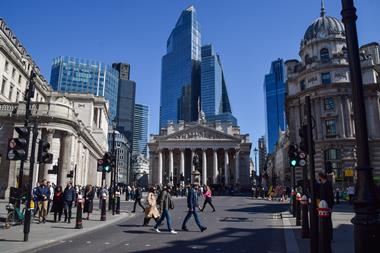On 17 August 1896, Bridget Driscoll was run over in the grounds of the Crystal Palace in London and became the first recorded person in the UK to be killed by a motor vehicle. By the turn of the 20th ...
On 17 August 1896, Bridget Driscoll was run over in the grounds of the Crystal Palace in London and became the first recorded person in the UK to be killed by a motor vehicle. By the turn of the 20th century, the number of fatal road accidents had soared to around 1,000, prompting calls for drivers to take greater care and to keep their speed down.
One hundred years on, the number of road vehicles has increased from 100,000 to approximately 28 million, while the annual death toll has risen to around 3,500. Speeding motorists kill on average 1,200 people each year, including 130 children, and cause 100,000 injuries.
The financial cost is also huge. The Royal Society for the Prevention of Accidents (RoSPA) estimates each injury accident costs around £60,000, while a fatality costs more than £1m. After taking into account healthcare, social benefits, personal pain, grief and suffering and lost production, RoSPA says road accidents could cost the country more than £13bn each year.
More to contend with
The number of hazards is increasing. A US study found using a hand-held mobile phone while driving quadrupled the risk of a collision. RoSPA has called for legislation banning the use of mobile phones by drivers.
But vehicle telecommunications technology is not just limited to mobile phones. RoSPA has also condemned the launch of a hand-held traffic jam warning system, concerned that drivers would take their eyes off the road as they flicked through the maps.
RAC road safety manager Kevin Delaney says luxury car-makers are developing in-car internet and email systems. He says: "People go on about mobile phones, but a whole range of route guidance systems and screens displaying all sorts of things could be even more distracting."
In the US, representatives from the telecommunications industry, insurance companies and other interested parties have set up the Telematics Project to examine the safety issues of this technology. National Conference of State Legislatures executive director William Pound says: "Experts predict that, by 2010, the global market for telematics technology will be as high as $50bn (£36bn). With this kind of financial impact, state legislators will need to understand the policy, safety and technology issues at stake in order to make informed decisions."
The proliferation in the use of telecommunications technology combined with the courts' hardening attitude towards dangerous drivers will inevitably lead to a spiralling personal injury claims bill for insurers.
While hazards increase, there is little progress in reducing the impact of existing hazards. Child pedestrians are particularly at risk. Last year, 107 were killed and 5,000 seriously injured in car accidents. RoSPA says traffic accidents are the leading cause of deaths and accidental injury among children and young people. The majority of these happen in built-up areas during rush hour.
RoSPA road safety adviser Dave Rogers says: "As soon as the clocks go back, we see an increase in road accidents. Darker evenings and deteriorating weather conditions are a fatal combination."
The government has responded by launching its "Tomorrow's Roads - Safer for Everyone" campaign, which aims to reduce road deaths and serious injuries to children by 50% by 2010. A controversial television commercial will show a car supposedly crashing into a child, to demonstrate that exceeding a 30mph speed limit by just 5mph greatly increases the risk of killing a pedestrian. A government spokesman said: "Some motorists do not regard speeding as a criminal act at all. Public attitudes must change. We must explode the myth that it is all right to speed if you are an experienced motorist."
Road safety campaigner Garry Handley says one in ten pedestrians would die if struck by a car moving at 20mph. At 30mph, five out of ten pedestrians would die, while at 40 mph, it rises to nine out of ten.
But keeping to the speed limit may not be an adequate defence. The courts are increasingly taking the view that, if a motorist injures a pedestrian, particularly a child, he or she must have been driving negligently, regardless of the speed they were travelling.
Negligence under the limit
The tragic case of 12-year-old Jamie Webb illustrates this. A car, travelling within the speed limit, hit and paralysed the schoolboy. The court held the driver had not paid due care to parked vehicles and awarded the boy £3.5m. His lawyer, Colin MacKay QC, said: "It underlines the point that there are circumstances in which a person driving at below 30mph can be guilty of negligence. When driving through a street market, it might be necessary to proceed as slowly as 5mph."
Although the principles of negligence still govern liability for road accidents, Alan Jones of law firm Davies Arnold Cooper reckons it is much more difficult to defend motor liability claims now than ten years ago. "It is not quite strict liability, but we are moving towards it."
Back in 1971, Lord Denning recognised this shift of attitude. Commenting on the case of Nettleship v Weston, in which a learner driver was held liable for the injuries caused to a friend who was teaching her to drive, he said: "We are moving away from the concept of `no liability without fault'. We are beginning to apply the test `On whom should the risk fall?' Morally, the learner driver is not at fault, but legally she is liable, because she is insured and the risk should fall on her."
Lord Denning added the Road Traffic Acts policy was that the insurance fund should compensate a person injured, but could only do so if the driver was liable. "So judges see to it that he is liable, unless he can prove care and skill of a high standard," he said.
Higher price on drunk driving
Drunk drivers can expect even less sympathy. Peter Noble had drunk 13 pints and two Bacardi Breezers when he drove eight friends in his Toyota Landcruiser towards another pub. Moments later, he killed six people. Judge Alan Goldsack said the maximum sentence for causing death by dangerous driving was usually ten years. Sentencing Noble to 15 years, he added: "I am satisfied the intention of Parliament was that if multiple deaths are caused, courts should have available to them a much greater sentence than ten years. The courts must respond to public concern about cases like this and pass tough sentences."
A concern for insurers is that, while the courts expect a higher standard of care, driving standards show no signs of improving. According to RAC , motorists are so ignorant of road signs that almost two-thirds believe a "cattle on the road" sign denotes foot-and-mouth and 20% think the sign for vehicles to give way to oncoming traffic means "one-way street ahead".
Hosted by comedian and actor Tom Allen, 34 Gold, 23 Silver and 22 Bronze awards were handed out across an amazing 34 categories recognising brilliance and innovation right across the breadth of UK general insurance.












































